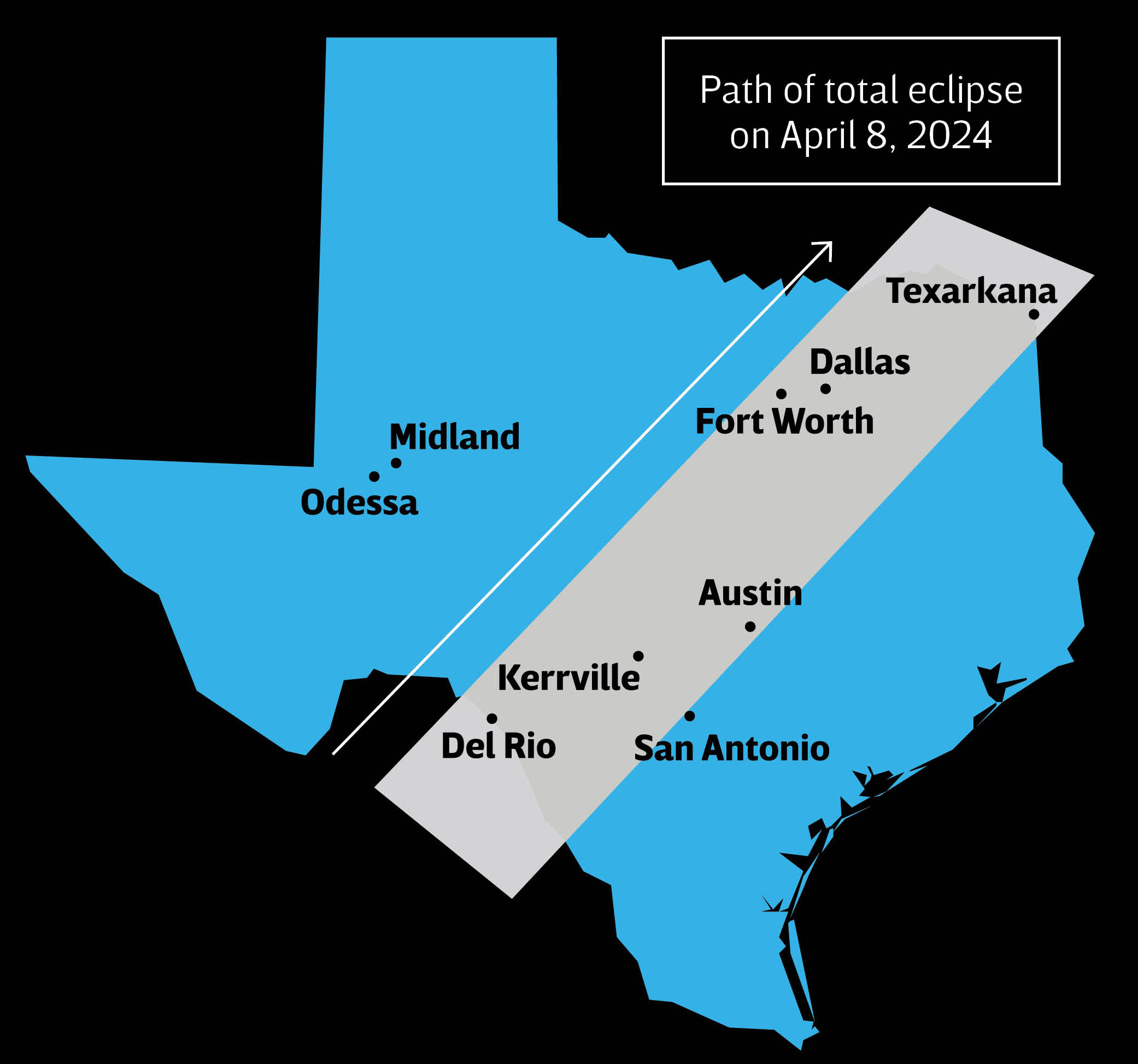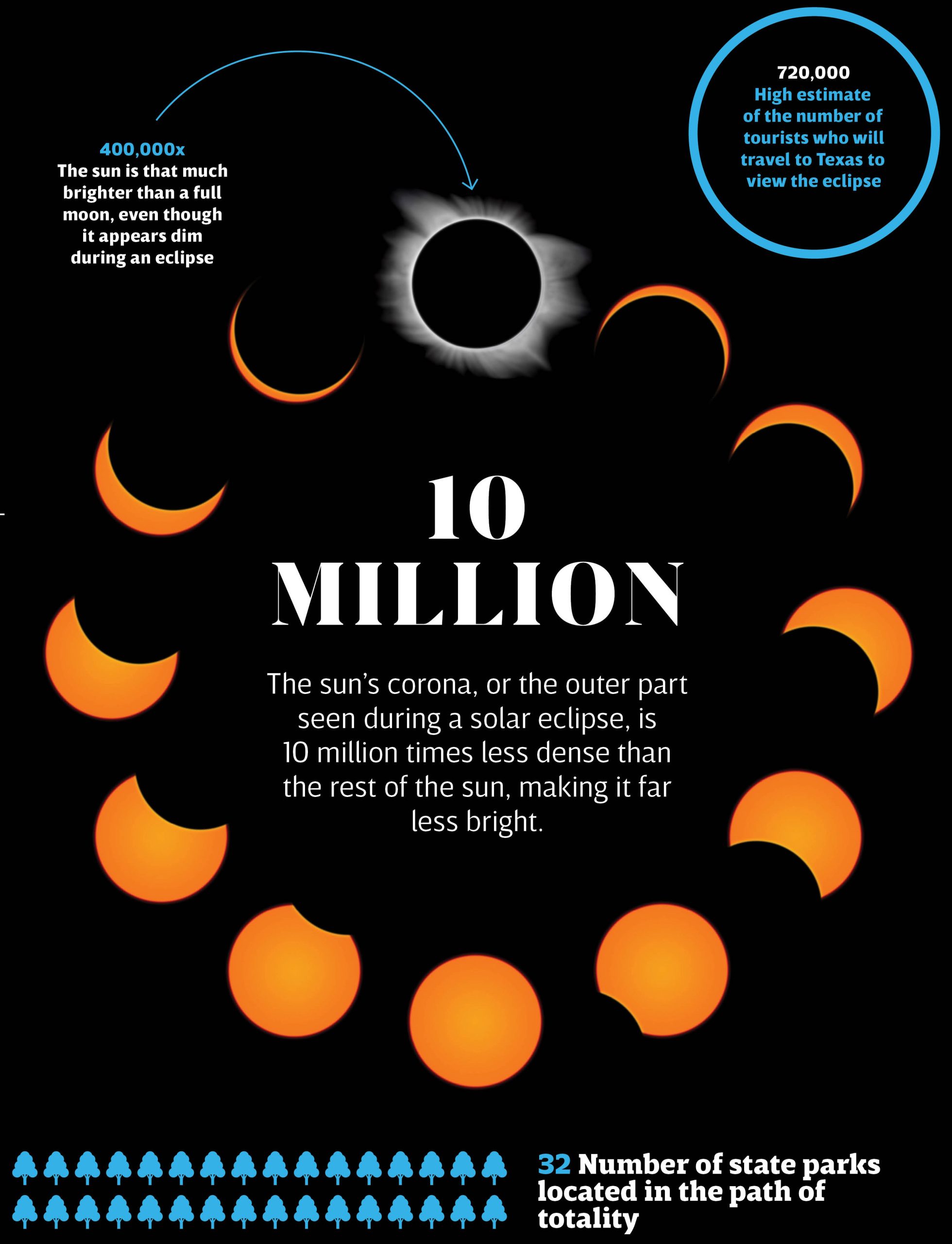Solar Power
Texas has a front-row seat to the rare celestial occurrence this spring
By Asher Elbein
On April 8, the sun will briefly go dark, casting the world into an eerie twilight. Texas is in the direct path of a total solar eclipse, an astronomical marvel that’s already drawing attention—and thousands of tourists—to the Lone Star State. But with all this heavenly hubbub, a person might be forgiven for wondering—what, exactly, is an eclipse?
Objects within the solar system orbit one another in a cosmic dance, looping on their separate paths, and sometimes those paths cross in front of one another. As one astronomical object passes another, its shadow blocks out the light. That’s an eclipse.
April’s eclipse is total, meaning the moon will pass at just the right spot to shroud the sun, blanketing specific parts of the earth in shadow. The eclipse in October 2023 was an annular eclipse, meaning the moon was at its furthest point from the earth and wasn’t able to cover the sun fully.
“A specific location only sees a total or annular eclipse every few hundred years, pretty much at random,” explains Adam Kraus, a professor of astronomy at the University of Texas at Austin. “So we’re extremely lucky to have two events occur within six months of each other.”
Photos courtesy GlobalP/iStock (owl); Gwengoat/iStock (eclipse)

1:27 PM
Time the totality begins in the southwestern edge of the state
4 minutes
The amount of time the total eclipse will cover a swath of Texas in darkness
2017 The last total eclipse visible in the United States
After the spectacle in April, there won’t be another total eclipse visible from the U.S. until 2044.


10°F
Temperature difference during a total solar eclipse

12.7
Millions of Texans who are estimated to live in the path of totality

480 miles of Texas fall under the path of totality

Party Animals
During a total solar eclipse, nocturnal animals sometimes wake up, and diurnal animals may start to sleep.









